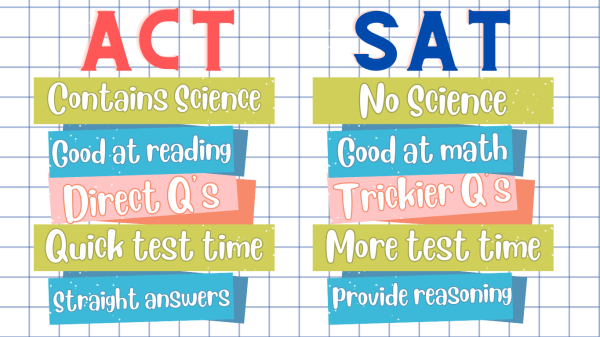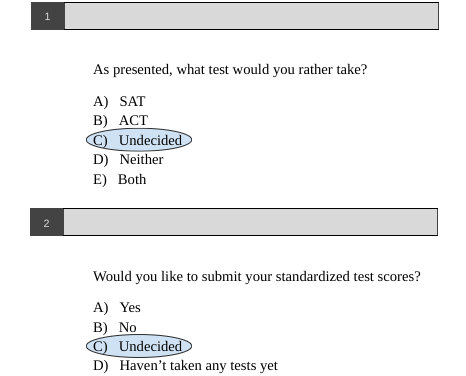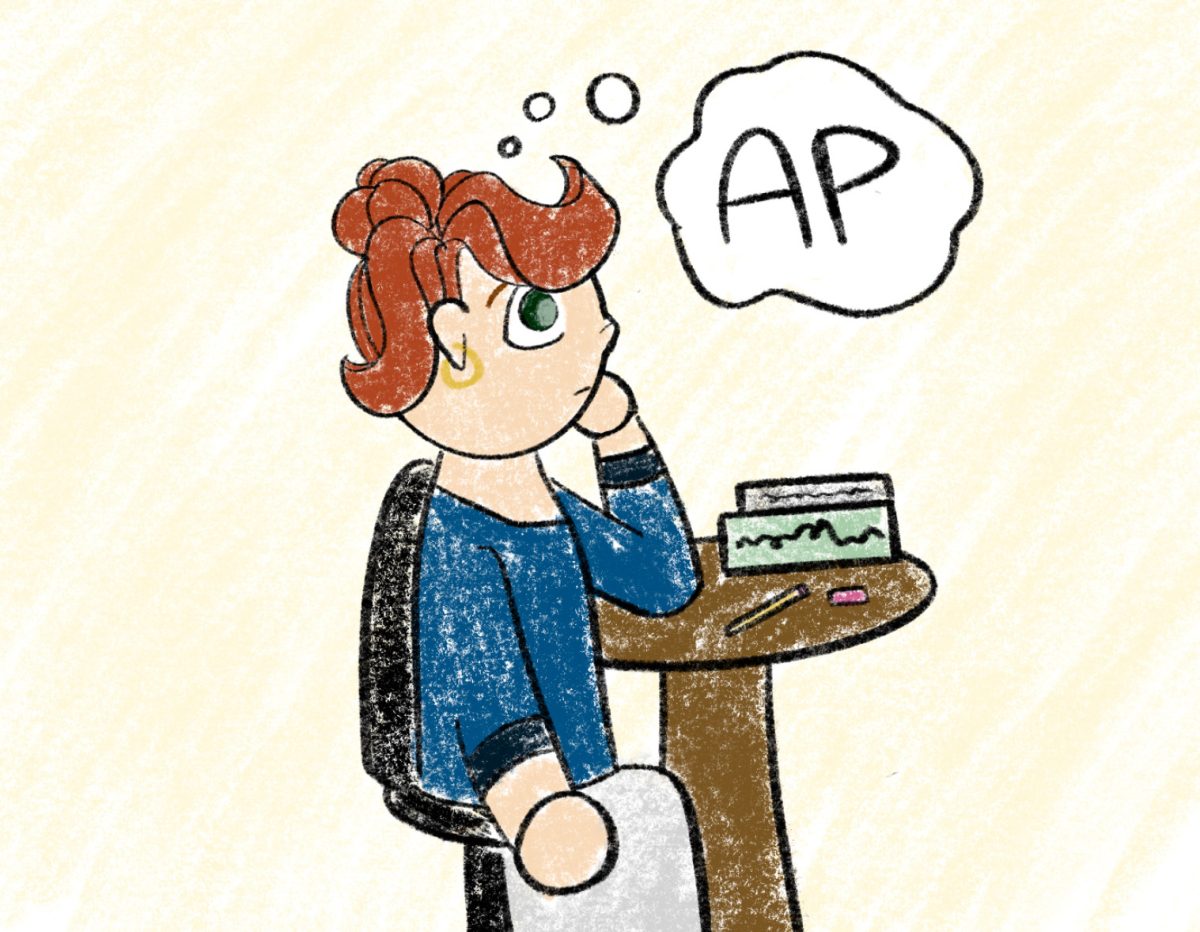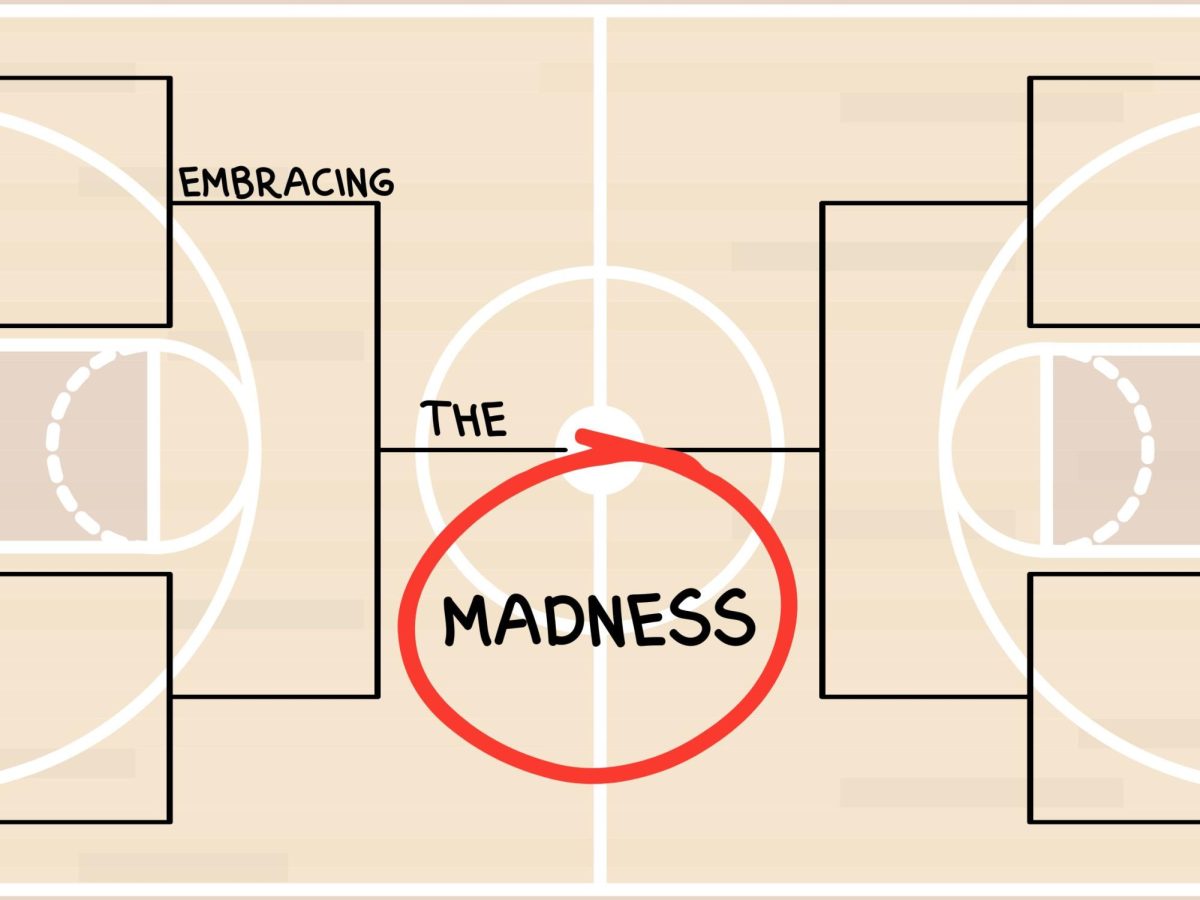The beginning of senior year can be one of the most stressful and overwhelming times of a student’s life. College admissions are right around the corner: only four months away, if not less. Students have to worry about getting teacher recommendations, putting together their applications and writing college essays. On top of this, they also have to worry about standardized test scores. That’s where the SAT and ACT comes in.
Both exams have found varying degrees of success over the years across the country. The Midwest leans towards the ACT and coastal high schools tend to prefer the SAT. Although there is widespread appeal towards both exams, many colleges have shifted towards optional testing. With this change and the College Board switching the SAT to online starting Jan. 1, 2024, questions are arising if the tests even need to be taken. If so, how do students decide which one should be taken?
If students test at a level that’s comparable with who they are as a student, there’s really no reason to hold that score back because that score just reinforces that this is a really good student.
— Greg Yoder
Taking the SAT or ACT can be a very time-consuming, expensive and also stressful process for many students. However, it can often also be a very useful tool for colleges reading student applications. By submitting ACT and SAT scores, students can receive merit scholarships if the scores are high enough. Colleges are also able to access more information regarding the student’s talents and work ethic. In many cases, colleges feel safer accepting students who submit test scores as opposed to a test-optional applicant.
Greg Yoder, a counselor and proctor of the practice SAT and ACT at West High School, finds that taking the test can be an important portion of the college application process. Yet he knows there are also many other directions students can take.
“If the test score you get doesn’t feel up to par with who you are as an academic student, you don’t have to submit that test score. If students test at a level that’s comparable with who they are as a student, there’s no reason to hold that score back because that score just reinforces that this is a really good student,” he said.
After deciding whether or not to even take an exam, it just boils down to choosing which one to take.

With a runtime of three hours, the SAT is composed of a 75 seconds-per-question Reading section, a 48 seconds-per-question Writing section, a 75 seconds-per-question Math section with no calculator (primarily Algebra) and an 87 seconds-per-question Math with Calculator section.
The ACT clocks in at three hours and 55 minutes, with a 36 seconds-per-question English section, a 60 seconds-per-question Math section (primarily Algebra and Geometry), a 53 seconds-per-question Reading section and a 53 seconds-per-question Science section.
Max Gerke ’24 has experienced both tests first-hand, taking the ACT in July and the SAT in Oct. 2023. While doing preparations for both, he found the two to be greatly different.
“A pro of the ACT is that it’s more straightforward reading and writing, but the con of that is that the science is really hard. There’s so much you have to comprehend in such a short amount of time. [With the] SAT, you’re more relaxed the whole time because there’s more time. The reading is a lot more interpretive versus listing out facts that have been said in the reading,” he said.
Generally what we find is that 50% of students will perform better on one [test] than the other.
— Greg Yoder
When it comes time to study and prepare for the exams, the best methods to embrace are taking plenty of practice tests and familiarizing yourself with the testing methods. Free practice tests for both exams can be found on the College Board website, and tailored SAT practice can be found on Khan Academy. Taking the PSAT or the Pre-ACT in the fall can also help students prepare for the tests. These exams put students in an environment similar to that of the SAT or ACT, so they can get a feel for what taking each exam is like. Jill Hofmockel, a librarian at West, also points out some other resources that students can use.
“We have books and other print materials that are available for kids to check out. The books will have sections about the structure of the test and strategies,” she said.
Yoder believes that students who decide to put in time and effort into preparation will largely benefit through the testing process.
“There’s a lot of different directions you can go with the college admissions piece. I feel very strongly that it’s a personal decision for everybody, and it’s not the same for everybody,” he said.
There is no right or wrong decision when it comes to testing. Although they can be beneficial if a student scores well, their absence won’t make or break a college application.



























